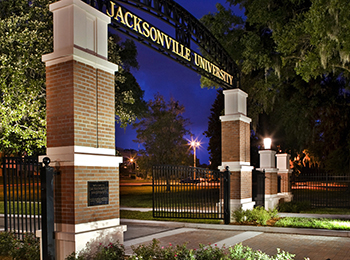 JACKSONVILLE, Fla. — The Jacksonville University (JU) campus recently completed a $2.5 million electric conversion from its own power plant to being totally reliant on Jacksonville Electricity Authority (JEA) electric service on June 6. School Construction News spoke with David Fleming, CSI-CDT, construction project manager for the university, about why the conversion was necessary for maintenance and operations of the on-campus facilities.
JACKSONVILLE, Fla. — The Jacksonville University (JU) campus recently completed a $2.5 million electric conversion from its own power plant to being totally reliant on Jacksonville Electricity Authority (JEA) electric service on June 6. School Construction News spoke with David Fleming, CSI-CDT, construction project manager for the university, about why the conversion was necessary for maintenance and operations of the on-campus facilities.
Q: What was the project’s goal?
Fleming: The project goal was to disconnect the campus from its own 60-plus-year-old, 4160-volt electric vault switchgear circuit breaker distribution system and to disconnect from the two JEA 25000/4160-volt primary transformers (non-standard industry transformers) and to convert over to JEA’s 25000-volt primary service and JEA transformers. The campus’ existing 4160-volt dedicated primary/secondary service cable and conduit distribution system was from four switchgear circuit breakers serving 80 percent of the campus buildings, and the remaining 20 percent of the campus buildings were supplied from JEA’s dedicated primary service, conduit and transformer distribution system as a result from recent construction projects. The project only intercepted the existing campus 208/240-volt secondary cable/conduit system.
Due to the recent construction projects at each end of the campus, supplied from the JEA 25000-volt primary service and JEA transformers, [the project] created a north-end and a south-end single feed. This project utilized the single feed and created a north-end and a south-end dual-feed loop. The JEA primary service enters the campus from two separate directions for each loop and provides a back-up electric service loop if one end of the loop is damaged or severed. The campus is divided equally from each loop. Another benefit is the loop can be expanded when new buildings are brought on line by simply isolating and connecting the primary service between the two transformers.
An issue that developed from the former electric vault switchgear circuit breaker system was that if an individual transformer failed or primary cable failed, the whole circuit breaker distribution line had to be shut down for associated repair, which would mean 20 to 30 percent of the campus buildings would be without power. The new dual-feed loop can be isolated for a single transformer failure or a single primary cable failure. The distribution line can be de-energized between two transformers and affect only a single building.
Q: What was the main reason for making the switch?
Fleming: The former electric vault circuit breakers, primary and secondary service cables, transformers, conduits and manholes were owned by JU, and associated repair costs were the university’s responsibility. The new JEA electric service transfers the repair and cost over to JEA for the primary service cables, conduits, manholes and transformers, although the university is still responsible for the existing 208/240-volt secondary cables and conduits.
Q: How will switching to JEA make university operations more efficient?
Fleming: I don’t know if energy efficiency could be stated, but having a reliable and dependable utility company service will make operations more efficient. The operational side benefits are maintenance cost, expedited response from JEA, upgraded electric service and industry-standard transformers.
Q: What does the future of maintenance and operations look like for the university after this conversion?
Fleming: Based on the former electric distribution system with an evaluation of former service company billings from 2008 to 2014, the annual vault switchgear circuit breaker maintenance and associated electric distribution emergency service calls averaged about $30,600 per year. The other side of the equation is the ability to repair antiquated circuit breakers, non-standard industry transformers, special-order or custom-made parts — most of which are not nationally available — which makes the repair and/or annual service maintenance more difficult.

